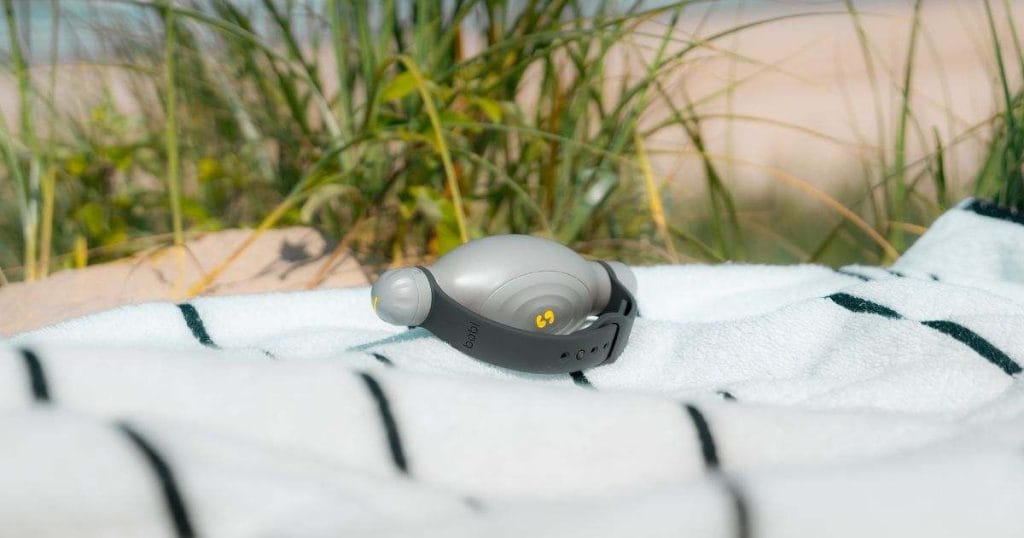
In my psychology clinic, I witness the everyday struggles of individuals experiencing panic attacks. Panic attacks are exhausting and can hugely affect the quality of life of those who experience them. Stopping panic attacks and enabling people to overcome them is a key focus in my practice. Despite the unique circumstances of each person, there are consistent themes that emerge.
One common issue is dysfunctional breathing. Many people do not realize that they are breathing incorrectly and struggle to adopt a technique they can use when panic strikes. This difficulty in finding an effective breathing method often worsens the panic attack symptoms. This post is designed to give you a detailed view of panic attacks by giving you a perfect solution in the form of Bobi to stop panic attacks instantly.
Understanding the nature of panic attacks is crucial for effective management. These intense episodes of overwhelming fear and distress can be triggered by specific situations or occur unexpectedly. Differentiating panic attacks from anxiety attacks is also important for accurate diagnosis. Panic disorder is a common mental disorder characterized by recurring panic attacks for no apparent reason.
If you have frequent panic attacks, talk to your healthcare provider. Recognizing the severity of symptoms is vital in seeking appropriate treatment. Moreover, medications are available that can help reduce the severity and number of panic attacks you have. It’s better to get a professional consultation before things get worse.
Many of my clients have reported that panic attacks often feel as if they are having a heart attack. Panic attacks can manifest through a range of physical and mental symptoms. Physically, individuals may experience:
Mentally, panic attacks can cause feelings of near-death or loss of reality, creating a sense of fear and dread. An in-depth knowledge of panic attack symptoms, along with feelings of fear and intense anxiety, is crucial in identifying panic attacks and seeking appropriate help. This will help individuals better navigate their experiences and take necessary steps towards managing and finding relief from panic attacks.
Whilst global studies are limited, one of the studies predicated on World Health Organization data cited c. 13% of people have experienced a panic attack at some point in their lives. These global statistics show the magnitude of the problem and emphasize the need to address the panic attacks on a global scale. The need of the hour is to provide people with psychoeducation about how to overcome panic attacks, to help improve the overall mental health of individuals and communities.
While panic attacks are intense, sudden episodes of fear, anxiety attacks are commonly described as being more prolonged. Panic attacks often come with the physical symptoms cited above, while anxiety symptoms may have more cognitive signs like excessive worry or racing thoughts. Panic attacks tend to occur without a specific trigger, while anxiety attacks can be related to specific stressors. Additionally, panic attacks have a shorter duration compared to anxiety attacks.
The NIMH states that panic disorder is characterized by unexpected and repeated episodes of intense fear accompanied by physical symptoms. These episodes can significantly affect individuals’ lives, occurring “out of the blue” and not in conjunction with a known fear or stressor.
Differentiating between these two types of attacks helps healthcare professionals provide appropriate treatment based on the individual’s symptoms and promote mental well-being. It is also important to note that ‘anxiety attacks’ are not formally recognized as a psychiatric disorder (in the Diagnostical and Statistical Manual of Mental Disorders). Similarly, there are clear differences between a panic attack & heart attack.
Panic attacks are thought to arise from a combination of genetic, biological, and environmental factors.
Panic attacks are primarily driven by physiological responses initiated by the brain’s perception of a threat. These responses include hyperventilation, which leads to an imbalance between oxygen and carbon dioxide levels in the body. This imbalance results in a condition called respiratory alkalosis, causing symptoms such as dizziness, tingling sensations, and chest discomfort.
Additionally, panic attacks trigger a significant increase in heart rate, profuse sweating, and a slowdown in the digestive system as blood is redirected to vital organs. These physiological changes collectively create a sense of impending doom, a characteristic feature of panic attacks.

Panic attacks are a common physiological response to stressful and anxious situations, driven by the amygdala’s activation in the brain. The amygdala, responsible for processing emotions like fear and stress, triggers the fight or flight response when it perceives a threat. This response involves increased heart rate, elevated blood pressure, rapid shallow breathing, and the release of stress hormones like adrenaline, all geared towards preparing the body for immediate action.
However, in the case of a panic attack, the amygdala can become overly sensitive or misinterpret non-threatening situations as dangerous, leading to a sudden onset of symptoms such as a racing heart, shortness of breath, sweating, and intense feelings of fear or dread. This physiological process is essential for individuals to better understand and manage panic attacks, often through certain techniques. The techniques include controlled breathing or cognitive-behavioral therapy to mitigate the exaggerated response of the amygdala
Adrenaline, a hormone released during times of stress or fear, plays a significant role in panic attacks. Excess adrenaline, along with substances like caffeine, can intensify the symptoms of a panic attack, making them more overwhelming. Managing adrenaline levels is crucial in reducing the severity of panic attack symptoms. One effective way to regulate adrenaline during a panic attack is through slow breathing. By inhaling and exhaling slowly, you can help calm your body and regulate adrenaline levels. The controlled levels of adrenaline play a vital role in stopping panic attacks, which includes avoiding substances like caffeine.
According to National Library of Medicine, Treatment and management of panic disorder involve a combination of psychological interventions, such as cognitive-behavioral therapy, and pharmacological treatments.
Nasal breathing plays a crucial role in managing panic attacks. It promotes relaxation and reduces anxiety by activating the parasympathetic nervous system. The slow, controlled nature of nasal breathing helps regulate heart rate during panic attacks, ensuring a calmer state. By incorporating nasal breathing techniques, individuals can find relief from the symptoms of panic attacks. It is an effective and natural method that can be used alongside other strategies such as mindfulness, progressive muscle relaxation, or cognitive-behavioral therapy (CBT). Nasal breathing is a simple yet powerful tool that can be practiced anytime, anywhere.
Nasal breathing plays a vital role in our overall well-being. When we breathe through our nose, the air gets filtered, warmed, and moistened, creating a more comfortable experience for our respiratory system. Additionally, the nasal passage releases nitric oxide, a gas that widens our blood vessels and improves blood flow throughout the body. This enhanced circulation supports optimal lung function and improves the exchange of oxygen in our bloodstream. Moreover, breathing through the nose engages the diaphragm, the primary muscle responsible for breathing. When you engage the diaphragm, it is recognized as a key enabler for managing stress, and allows for a more efficient and complete breath, promoting overall respiratory health.

Slow, controlled breathing is of utmost importance when it comes to stopping panic attacks. By engaging in this technique, you activate the body’s relaxation response, which helps alleviate the symptoms of a panic attack. One of the key benefits of slow breathing is the increase in oxygen supply to the brain (as well as the reduction in the loss of carbon dioxide from the body), which can significantly reduce panic symptoms. Additionally, the act of slow exhales stimulates the vagus nerve, responsible for promoting relaxation in the body. Controlled breathing also works wonders in reducing muscle tension and lowering heart rate.
Techniques such as grounding, taught by mental health professionals, help people overcome panic attacks or high levels of distress. Grounding emphasizes moving away from unhelpful thoughts and unwanted internal experiences by connecting to the ‘now’, by engaging our five senses. Another way to view this process is the act of moving away from our ‘emotional brain’ to our logical or ‘executive brain’ (frontal lobes).
Numerous grounding techniques may be used, including:
With a body scan, you start by focusing your attention on the top of your head and move down to your toes. Throughout that time, you seek to take notice of the sensations you feel at each point of the body.
The 5-4-3-2-1 technique involves identifying five things you can see, four things you can feel/touch, three things you can hear, two things you can smell, and one thing you can taste. Focus on each item in turn.
You can use different temperatures to ground yourself to the present. Focusing on the senses associated with holding something like an ice cube, or a mug of hot water, allows you to notice what it feels like and what your body does in reaction to the sensation.
When listening to a song it can be beneficial to focus attention on the lyrics or the instrumentals. Music can often evoke physical sensations, or specific feelings within the body, and it can help to focus on these experiences.
bobi _ your personal breathing coach is designed to help regulate breathing patterns during panic attacks through its slow, controlled breathing techniques. Its mirroring of our natural breathing rhythms aids in relaxation. By incorporating bobi into your panic attack relief routine, you can enhance the effectiveness of breathing and grounding techniques for immediate and long-term relief. With its user-friendly design and easy integration into daily life, bobi is a valuable tool for those seeking to manage panic attacks and promote overall well-being.

Understanding brain functioning and the fight or flight response is essential when it comes to stopping panic attacks. Nasal breathing along with slow, controlled breathing techniques play a significant role in providing relief during these episodes. Incorporating bobi into panic attack management offers an effective instant solution to cure your attacks.
By promoting slow breathing, bobi helps regulate the body’s stress response, providing a sense of control during panic attacks. Integrating bobi into your daily routine can provide ongoing support and relief from panic attacks. So, next time you experience a panic attack, let bobi guide and support you.
While panic attacks are intense, sudden episodes of fear, anxiety attacks are described as being more prolonged. Panic attacks often come without a specific trigger, whereas anxiety attacks can be related to specific stressors. Panic attacks also have a shorter duration compared to anxiety attacks.
Nasal breathing promotes relaxation and reduces anxiety by activating the parasympathetic nervous system. The slow, controlled nature of nasal breathing helps regulate heart rate during panic attacks, ensuring a calmer state.
Slow, controlled breathing activates the body’s relaxation response, helping alleviate panic attack symptoms. It increases oxygen supply to the brain, reduces loss of carbon dioxide, stimulates the vagus nerve promotes relaxation, reduces muscle tension, and lowers heart rate.
Some grounding techniques to overcome panic attacks include the Body Scan, the 5-4-3-2-1 Technique, touching hot or cold items, and listening to music. These techniques help individuals connect to the present moment and move away from unhelpful thoughts.
bobi is an award-winning tactile breathing companion that guides users in practicing slow, controlled breathing techniques. It mirrors natural breathing rhythms aiding in relaxation. Incorporating bobi enhances the effectiveness of breathing and grounding techniques, providing both immediate and long-term relief from panic attacks.
Stay updated on what's happening at bobi, and all things breathing, anxiety and mental wellness.